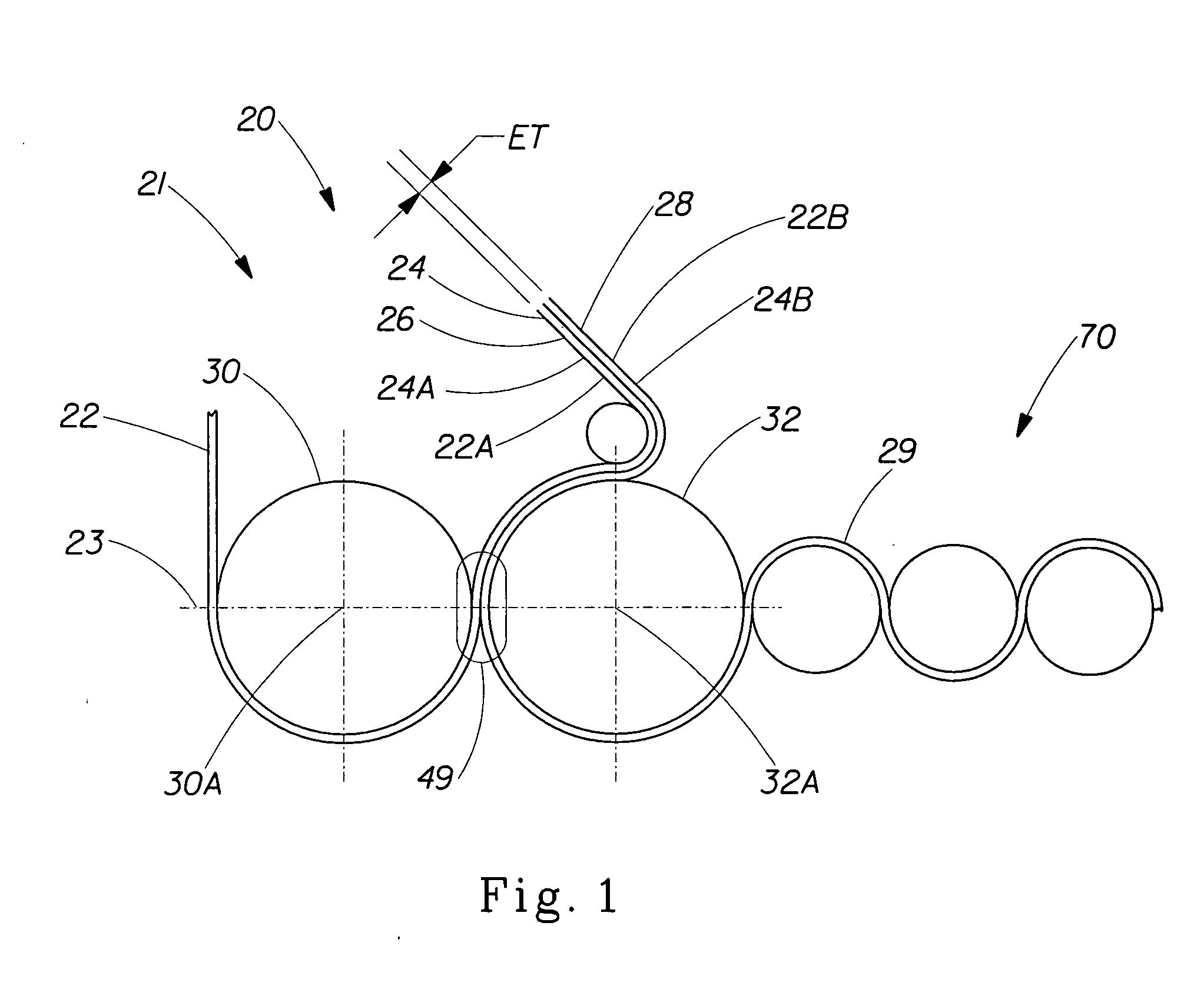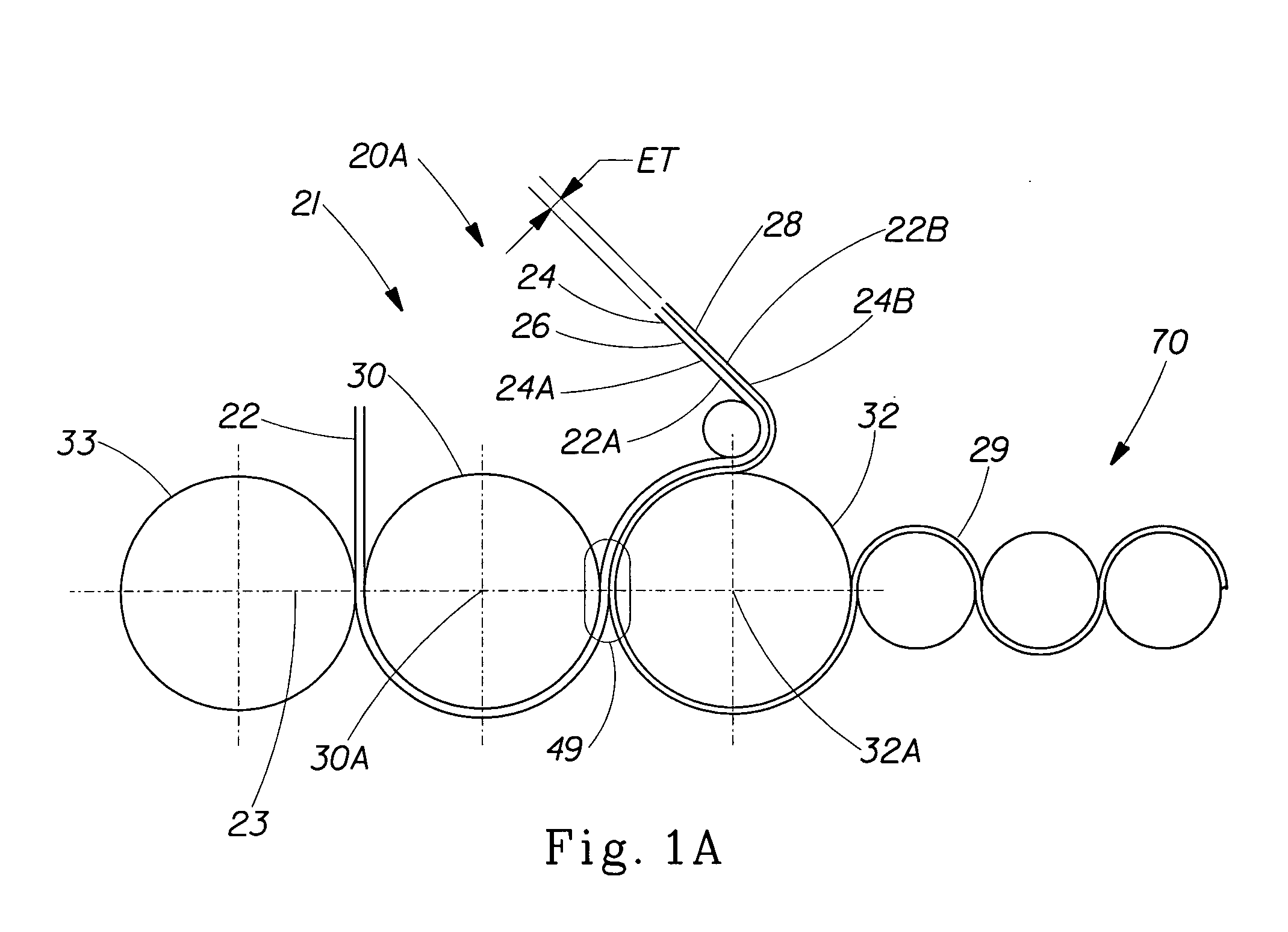Embossing apparatus
a technology of embossing apparatus and embossing surface, which is applied in the field of embossing methods and materials, can solve the problems of limited thickness of coating, limited ability to separate burn embossing, and limited application of the above-described methods
- Summary
- Abstract
- Description
- Claims
- Application Information
AI Technical Summary
Problems solved by technology
Method used
Image
Examples
example
[0049] This example provides an exemplary method of providing one embodiment of the apparatus of the present invention for producing one embodiment of an embossed web material of the present invention such as a wrap material for wrapping a food product. The wrap material of the present invention must have preferably no pinholes or at least not more than about 12 pinholes per a material product size of about 72 square inches, in order to provide an effective protection of the wrapped food product.
[0050] The wrap material of the present invention was formed from a relatively thin deformable film, and, thus can require a relatively small sidewall clearance—usually from about 0.002″ (about 0.050 mm) to about 0.008″ (about 0.203 mm)—between the unmatched embossing patterns of the embossing rolls forming the embossed web. However, it should be noted that the present example is intended to also represent other instances where the embossed material can be relatively thick, including films ...
PUM
| Property | Measurement | Unit |
|---|---|---|
| radial depth | aaaaa | aaaaa |
| radial depth | aaaaa | aaaaa |
| width | aaaaa | aaaaa |
Abstract
Description
Claims
Application Information
 Login to view more
Login to view more - R&D Engineer
- R&D Manager
- IP Professional
- Industry Leading Data Capabilities
- Powerful AI technology
- Patent DNA Extraction
Browse by: Latest US Patents, China's latest patents, Technical Efficacy Thesaurus, Application Domain, Technology Topic.
© 2024 PatSnap. All rights reserved.Legal|Privacy policy|Modern Slavery Act Transparency Statement|Sitemap



